Plastic epoxy has become the most reliable adhesive for repairing and bonding various plastic materials due to its exceptional strength and durability. It can be used in a variety of applications, from simply fixing a bumper to keeping various household items intact or implementing a DIY project. Plastic epoxy is indeed one of the most reliable bonding agents. This article discusses the factors affecting the effectiveness of plastic epoxy and how to choose the right one for specific repair needs. The reader will be led through the science of plastic epoxy, its particular merits, and practical application tips to ensure a robust, durable bond. The reader will eventually become fully equipped with the required knowledge—from understanding the composition to acquiring practical application skills—to face any plastic repair challenge with confidence.
What is Plastic Epoxy?
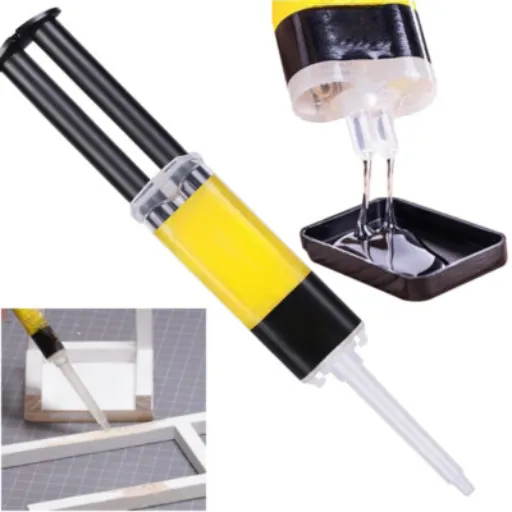
Plastic epoxy is a two-component adhesive composed of a resin and a hardener that, when mixed, creates a strong, durable bond particularly suited for plastics. The curing process, a chemical reaction, activates the resin and hardener, forming a solid material with high strength. This adhesive is not only capable of bonding different types of plastics but can also be used for crack repairs, gap filling, and even making waterproof seals. Due to its multifaceted nature and ability to bond different materials, such as plastic to metal or wood, plastic epoxy is a widely preferred solution for both hobbyists and industrial applications. Besides its fast setting time, it is also resistant to chemicals and can withstand high temperatures, making it an indispensable tool in various repair and construction tasks.
Chemical Composition of Plastic Epoxy
The composition of plastic epoxy usually consists of two principal components, namely, a resin and a hardener. The resin is generally derived from bisphenol-A (BPA) or related compounds that serve as the base material. At the same time, the hardener typically contains amine-based compounds that stimulate the curing process and form the mix. Once these two components are combined, a chemical reaction called polymerization occurs, creating strong, durable bonds. Fillers, pigments, and/or stabilizers are additional additives that can be mixed to enhance properties such as adhesion, flexibility, heat resistance, or even color. This specific chemical makeup gives plastic epoxy the ability to bond most materials, withstand harsh environmental conditions, and retain structural integrity even in the most demanding situations.
Differences Between Plastic Epoxy and Other Adhesives
Plastic epoxy differs from other adhesives in its stronger bonding, greater durability, enhanced chemical resistance, and ability to bond to a wide range of materials.
| Parameter | Plastic Epoxy | Other Adhesives |
|---|---|---|
| Strength | Very high | Varies |
| Durability | Excellent | Moderate to high |
| Chemical Resist. | High | Low to moderate |
| Material Range | Versatile | Limited |
| Temperature | Heat-resistant | Varies |
| Curing Time | Moderate | Fast to slow |
| Flexibility | Low to moderate | High (in some) |
| Applications | Structural repair | General use |
Types of Plastic Used with Epoxy
Plastic epoxy can bond with several kinds of plastics such as:
- Polycarbonate (PC): This material is often used in high-strength applications due to its durability and precision.
- Acrylic (PMMA): The bonding here will be robust and transparent.
- ABS (Acrylonitrile Butadiene Styrene): It is a ubiquitous plastic used in household and industrial applications; thus, it is the most preferred material for repair.
- PVC (Polyvinyl Chloride): It is a material that is extremely common in pipes and fittings. Epoxy performs very well by effectively bonding and sealing PVC surfaces.
- Polyethylene (PE) and Polypropylene (PP): These are not easy to bond, but with specific surface treatments, adhesion becomes very effective.
Plastics like these won’t let you down when used with epoxy, as they have already proven their strength and reliability across a wide range of applications.
Applications of Plastic Epoxy
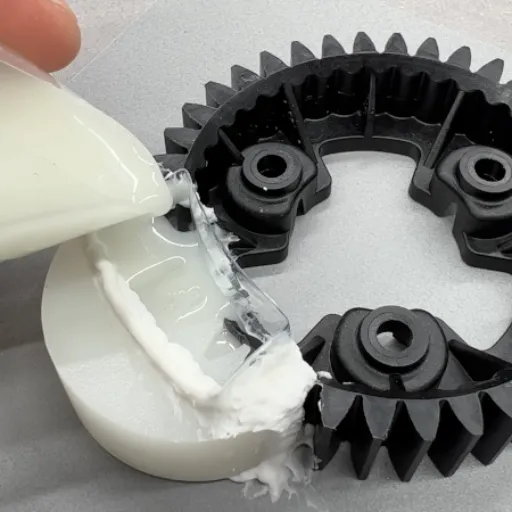
Because the plastic epoxy has powerful bonds and is very durable, its applications are numerous. To name a few: the mending of household utensils, the plugging of leaks in pipes, the joining of auto pieces and the making of plastic surfaces smooth and free of cracks. In addition, this easily manageable and safe product is a great help for making artworks, creating prototypes, and in the industrial sector, where a strong, dependable adhesive is needed.
Plastic Repair in Automotive Industries
Plastic epoxy is a very important factor in the automotive industry, as it reduces repair costs by replacing expensive parts and prevents the market from being flooded with non-recyclable junk. The very first accusation for that “how to repair car plastic with epoxy” type of inquiry has been raised, indicating that people are doing the work themselves because it has become a trend. This, in turn, illustrates the ability and low cost of plastic epoxy to be the most trusted and efficient adhesive for vehicle renovation and upkeep.
DIY Projects with Epoxy Putty
Epoxy putty has emerged as a versatile material with a wide range of applications. From repairing leaks in water pipes to filling cracks in wood furniture, it’s the preferred solution for fast and effective fixes throughout the house. The moldable consistency allows it to be easily formed and applied to various surfaces. After curing, it is robust and durable, thus making it very reliable for repairs that are to last long. Whether it is a broken ceramic piece that needs patching or a small opening that requires sealing, epoxy putty consistently delivers excellent results.
Using Epoxy Glue in Woodworking
Epoxy glue is a powerful adhesive widely used in woodworking for its extraordinary strength and versatility. It is particularly outstanding for joining pieces of wood under stress or for long-term connections. To use epoxy glue properly, the surfaces must be clean, dry, and sanded for better adhesion. Mix the resin and hardener in the manufacturer’s prescribed ratio to achieve a good bond. Spread the mixture uniformly on both surfaces and clamp them together during the curing period, which is usually between a few hours and a day, depending on the product used. Epoxy glue is also perfect for filling gaps, cracks, or imperfections in wood, providing a smooth, strong finish. For areas where waterproof or heat-resistant wooden joints are needed, epoxy glue is always the first choice because of its longevity and resistance to harsh environmental conditions.
Benefits of Using Plastic Epoxy
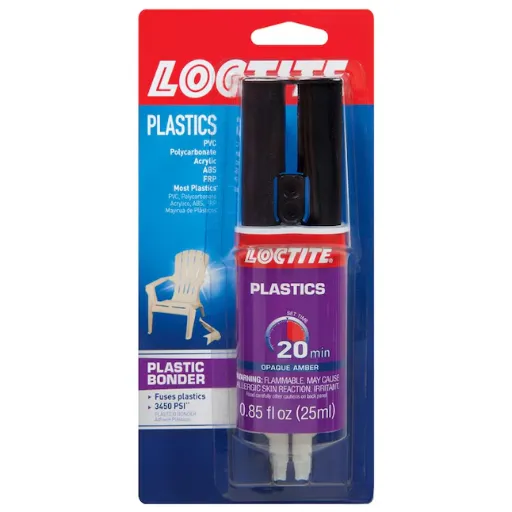
💪 Strong Adhesion
Plastic epoxy gives a tough bond that is suitable for plastic of all types and thus it has superior strength and reliability.
🛡️ Environmental Resistance
The product is resistant to water, heat, and chemicals as well as other environmental factors that sometimes limit the indoor and outdoor applications.
🔧 Versatility
Plastic epoxy bonds not only plastic plastics but also different materials like metal, wood, and glass.
🔩 Gap Filling
Due to its thick nature, plastic epoxy is able to fill in cracks, gaps or rough and uneven surfaces and thereby giving seamless repair or bond.
⚡ Quick Setting Time
Several plastic epoxies set hard in a rapid manner thus allowing quick repairs and reducing waiting times for the project.
Strong Bonding Capabilities
Plastic epoxy has strong adhesive properties, making it a powerful bonding agent. It can produce a bond that is not only very durable but also very long-lasting, even under stress or when environmental conditions vary. Its ability to bond to materials such as plastic, metal, wood, and glass makes it a highly effective bonding agent and a valuable solution for various projects and repairs.
Durability and Water Resistance
Plastic epoxy is among the adhesives in this category that earn the highest marks for durability and water resistance. Its curing process results in a solid bond, and plastic epoxy’s strong, water-resistant properties ensure it remains adhered even under constant exposure to humid conditions, submerged plant sectors, and rain. This is why plastic epoxies are widely used in projects involving boats, plumbing, and other items that are likely to come into contact with moisture. The recent trends in Google searches indicate that the queries about plastic epoxy’s waterproof features are among the most common ones which is a clear indication of its broad usage in different and complex scenarios.
Versatility Across Various Applications
The above-mentioned properties of plastic epoxy, such as strong adhesion, durability, and water insulation, have contributed to its widespread use across many application areas. The bonding capabilities of plastic epoxy include metals, plastics, wood, and glass, making it a go-to solution for construction, automotive, and home repairs. For instance, in automotive maintenance, it helps not only to repair cracks in engine parts but also to fasten parts of the car that need to be secured. It’s the same in construction when bonding pipes and strengthening the structure is done by the use of epoxy. Its waterproofing makes it well-suited for marine-related jobs, such as repairing or sealing leaks in plumbing systems. Moreover, plastic epoxy can be effectively used by non-professionals due to the convenience of two-part products that cure quickly and form a strong bond. Thus, by being affordable, reliable, and versatile, plastic epoxies are addressing the full spectrum of professional and DIY challenges.
Types of Plastic Epoxy Available
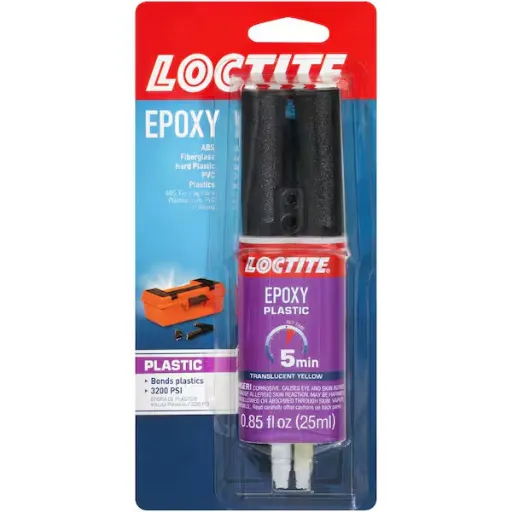
Epoxy resin is a plastic-based adhesive that can be obtained in various forms depending on its application. General-purpose epoxy is the most common type, followed by high-temperature epoxy, which allows working with extreme heat. What flexible epoxy does is add elasticity; therefore, it can be used in cases where the materials are temperature sensitive. Waterproof epoxy is made for such places that are constantly underwater or are generally moist. Time and effort are firmly rooted in the specific properties that enable each type to efficiently cater to and fulfill consumers’ demanding needs.
Two-Part Epoxies
Two-part epoxies consist of a resin and a hardener, which must be combined in specific proportions to activate the adhesive properties of both components. This epoxy variety is characterized by its strength, versatility, and durability. Two-part epoxies are widely used in industries such as construction, automotive, and marine, and they can bond a broad range of materials, including metal, wood, plastic, and ceramics. When the components are mixed, curing begins, ultimately forming a strong bond. Lately, there has been a rise in queries about “two-part epoxy applications” and “how to mix epoxy resin”. This indicates that the consumers are pretty interested in using these products not only for DIY projects but also for professional repairs. It means that two-part epoxies have already captured the market for their versatility and productivity in solving general bonding and repair problems.
UV-Cured Epoxies
Among the various types of adhesives, UV-cured epoxies harden upon exposure to UV light. Generally, the curing time of this glue is quick—often in seconds or minutes—making it suitable for time-critical applications. Most industries, like electronics, medical devices, and optics, use UV-cured epoxies for their precision and bonding strength. In addition, adhesives offer not only good durability but also a wide range of chemical resistance and clarity, making them very useful for delicate or high-performance applications. However, they still require direct UV exposure to cure effectively, which is a drawback for their use in dark places.
Specialized Blends for Different Plastics
To achieve optimal performance and adhesive properties for each type of plastic, you need a specific epoxy formulation for each. A case in point is that polypropylene and polyethylene, owing to their low surface energy, are among the most often used materials that require special UV-cured epoxies that not only include adhesion promoters but are also specifically designed to bond to low-energy surfaces. By the way, these promoters work by lifting the surface energy of the plastic, thus yielding stronger bonds. Likewise, polycarbonate and acrylic materials specifically require UV-cured epoxies with high optical clarity and high flexibility to guarantee their use in optical or decorative applications.
One might be doubtful whether UV-cured epoxies will work universally on all plastics. Well, this is mainly determined by the surface preparation and the specific epoxy mix. Although UV-cured epoxies can be formulated to adhere to many different types of plastic, the plastic type, surface condition, and curing conditions significantly impact effectiveness. In most cases, proper surface cleaning, along with primers, is crucial for improving adhesion on difficult substrates. Thus, the successful application of UV-cured epoxies relies heavily on a good understanding of the specific characteristics of the plastic and on choosing an epoxy blend tailored to the particular material.
Choosing the Right Plastic Epoxy
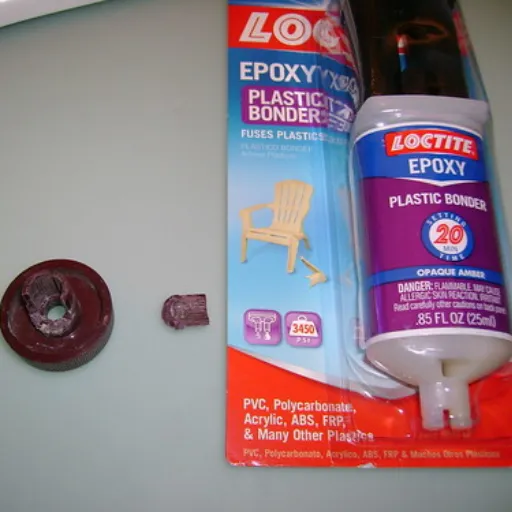
Choosing the most suitable plastic epoxy requires analyzing the plastic type you will use and pairing it with an epoxy formulated for that specific material. In the case of bonding, consider the plastic’s surface energy, flexibility, and chemical resistance. Furthermore, do not forget to properly prepare the surface, such as cleaning or applying a primer if necessary. By aligning the epoxy’s properties with the plastic’s traits, you will achieve maximum adhesion and durability.
Factors to Consider When Selecting Epoxy
- Type of Plastic: Recognize the plastic’s composition (for instance, polyethylene, PVC, or ABS) to pick an epoxy that is suitable for that material.
- Surface Energy: Consider whether the plastic has high or low surface energy; low-energy plastics may require special epoxies or surface treatments.
- Flexibility Requirements: Consider whether the epoxy should be flexible or rigid, depending on the plastic’s intended use.
- Chemical Resistance: Pick an adhesive that will not be affected by the chemicals or environmental conditions the bonded material might come in contact with.
- Curing Time: Include the curing speed of the epoxy you want, right after the project’s timelines and requirements.
Matching Epoxy to Plastic Types
To ensure epoxy adhesion to certain types of plastic, it is essential to choose an epoxy with characteristics similar to those of the plastic. Listed below are some of the most common plastic materials along with their characteristics and the considerations that guide the selection of an epoxy resin:
Polyethylene (PE) and Polypropylene (PP)
The plastics in question are of low-energy surfaces, which makes their bonding extremely difficult. The use of specialized epoxies designed for low-energy surfaces, or the application of surface primers, can result in a strong bond.
PVC (Polyvinyl Chloride)
General-purpose epoxies are mostly adhesive to rigid PVC. Choose a temperature-resistant epoxy if the bonding is done in extreme conditions.
ABS (Acrylonitrile Butadiene Styrene)
This plastic is the most common for durable applications and can be easily bonded to general-purpose epoxy adhesives. Use an epoxy rated for high impact resistance if required.
Acrylics (PMMA)
The acrylic plastics will need optical clarity and epoxies prepared for bonding transparent materials in order to avoid adhesive lines becoming visible.
Polycarbonate (PC)
When dealing with polycarbonate especially in applications that involve light transmission, use epoxy that remains clear and does not discolor.
Choosing an epoxy resin that matches the plastic’s properties provides a powerful, long-lasting bond that is well-suited to the material’s characteristics.
Environmental Considerations and Cure Time
The environmental factors are the most significant considerations when choosing and applying epoxy adhesives and they influence overall performance and durability of the bond. Temperature, humidity and ultraviolet light exposure can have a substantial effect in both the curing process and the bond’s longevity. For example, curing epoxy that is moisture-sensitive in high humidity can lead to poor adhesion. The same goes for cold or hot weather, which can cause poor curing and thus weaken the bond. Moreover, UV-resistant epoxies must be the first choice for outdoor or sunlit applications to avoid deterioration from long-term UV exposure.
The curing time is a matter of great importance, as it varies substantially depending on the epoxy type and environmental factors. Quick-drying epoxies may work superbly for repairs and other situations where immediate handling is required, but they may not be as durable in the long run. On the other hand, if the project allows for some time, slow-curing epoxies can deliver excellent performance and even durability (as they may take several hours to a day to cure fully). Following the manufacturer’s suggested cure time is extremely important, as applying stress to the adhesive bond while it is still premature can cause failure.
Reference Sources
-
Best Epoxy for Plastic: The Ultimate Guide to Plastic Adhesives – This guide explains why 2-part epoxy is often the best choice for heavy-duty plastic repairs.
-
Best epoxy for plastic: Know plastic, before reach for mastic! – A detailed overview of Loctite Epoxy Plastic and its applications for various plastic types.
-
What is the best epoxy for plastic repair? – Discusses the qualities of a good epoxy, including water resistance and durability.
-
What is the strongest epoxy for rigid plastic nubs and hinges? – A community discussion on the strongest epoxy options for specific plastic repair needs.
-
PlasticWeld Epoxy Putty – Information about PlasticWeld, a fast-setting epoxy putty designed for durable bonds with most plastic types.
Frequently Asked Questions (FAQs)
What is epoxy and how is it used in plastic repair?
Epoxy is an adhesive that features a resin and a hardener. The two components, when combined, form a bond suitable for various purposes, including plastic repair. It has a wide range of applications because its physical properties are excellent: it is very strong, resistant to heat and moisture, and therefore very suitable for repairing plastic items.
How does epoxy resin cure?
The curing process of resin is a chemical reaction between the resin and the catalyst. The resin and the hardener give off heat and at the same time, the liquid mixture becomes solid. Cure time will vary by product, depending on environmental conditions such as temperature and humidity.
What is the difference between two-part epoxy and epoxy putty?
Two-part epoxy consists of a resin and a hardener that must be mixed before use. It is powerful and applicable for a broad range of repairs. Epoxy putty, on the other hand, is a pre-mixed adhesive that can be shaped and is mainly used to fill openings and cracks in materials like plastic and metal.
How do I use an epoxy resin kit for my projects?
A typical epoxy resin kit consists of resin, hardener, and instructions. The first step is to measure and mix the resin and hardener in the recommended proportions. Mixing them with a mixer yields the best results before applying the mixture to your project, whether it is a plastic repair or a decorative coating.
What is high-strength epoxy, and where is it commonly used?
High-strength epoxy is engineered to deliver strong bonding, making it ideal for demanding applications. Construction, automotive repairs, and the gluing of materials such as fiberglass and carbon fiber, where a strong bond is essential, are among the typical fields where this type of epoxy is used.
What should I do if my epoxy starts to yellow?
The yellowing of the epoxy can be caused by exposure to sunlight or improper curing. To avoid this, make use of an epoxy that is UV-resistant for outdoor projects. In case the yellowing occurs after the curing process you will have to sand the surface and apply a new coat of epoxy to restore its clarity.
Final Thoughts
Plastic epoxy is an indispensable tool for professionals and DIY enthusiasts, offering unmatched strength, durability, and versatility for plastic repair and bonding applications. By understanding its chemical composition, selecting the appropriate type for your specific needs, and following proper application techniques, you can achieve reliable and long-lasting results. Whether you’re working on automotive repairs, household fixes, or industrial projects, plastic epoxy provides a cost-effective and dependable solution that withstands the test of time and environmental challenges.



















